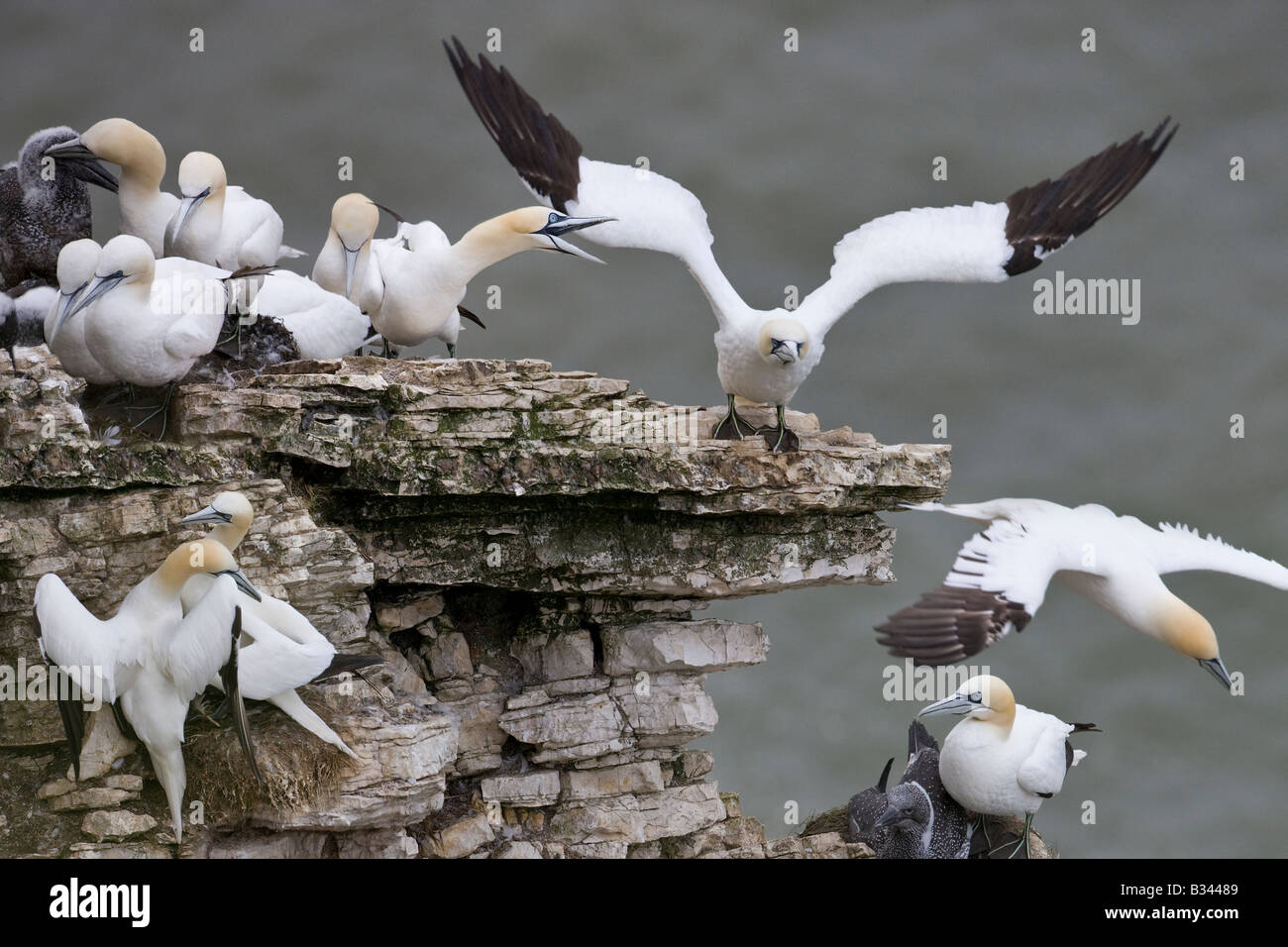Gannet colony - Morus bassanns - near Bempton Cliffs on the North Yorkshire coast in the United Kingdom.

Image details
Contributor:
Photography by STEVE ALLEN / Alamy Stock PhotoImage ID:
B34489File size:
50 MB (2 MB Compressed download)Releases:
Model - no | Property - noDo I need a release?Dimensions:
5120 x 3413 px | 43.3 x 28.9 cm | 17.1 x 11.4 inches | 300dpiDate taken:
August 2008Location:
Bempton Cliffs on the North Yorkshire coast in the United Kingdom.More information:
Gannets are seabirds in the family Sulidae, closely related to the boobies. The gannets are large black and white birds, with long pointed wings and long bills. Northern gannets are the largest seabirds in the North Atlantic, with a wingspan of up to 2 metres. The other two species occur in the temperate seas around southern Africa and southern Australia and New Zealand. Gannets hunt fish by diving from a height into the sea and pursuing their prey underwater. Gannets have a number of adaptations which enable them to do this: * they have no external nostrils; * they have air sacs in their face and chest under their skin which act like bubble-wrap, cushioning the impact with the water; * their eyes are positioned far enough forward on their face to give them binocular vision, allowing them to judge distances accurately. Gannets can dive from a height of 30 m, achieving speeds of 100 km/h as they strike the water, enabling them to catch fish much deeper than most airborne birds.Gannets are colonial breeders on islands and coasts, which normally lay one chalky blue egg. It takes five years for gannets to reach maturity. First-year birds are completely black, and subsequent sub-adult plumages show increasing amounts of white. The most important nesting ground for Northern gannets is the United Kingdom with about two thirds of the world's population. These live mainly in Scotland and the Shetland Isles. The rest of the world's population is divided between Canada, Ireland, Faroe Islands and Iceland, with small numbers in France (they are often seen in the Bay of Biscay), the Channel Islands and Norway. The biggest Northern gannet colony is in the Scottish islands of St Kilda; this colony alone comprises 20% of the entire world's population. Bass Rock in the Firth of Forth is also famous for its large gannet population.